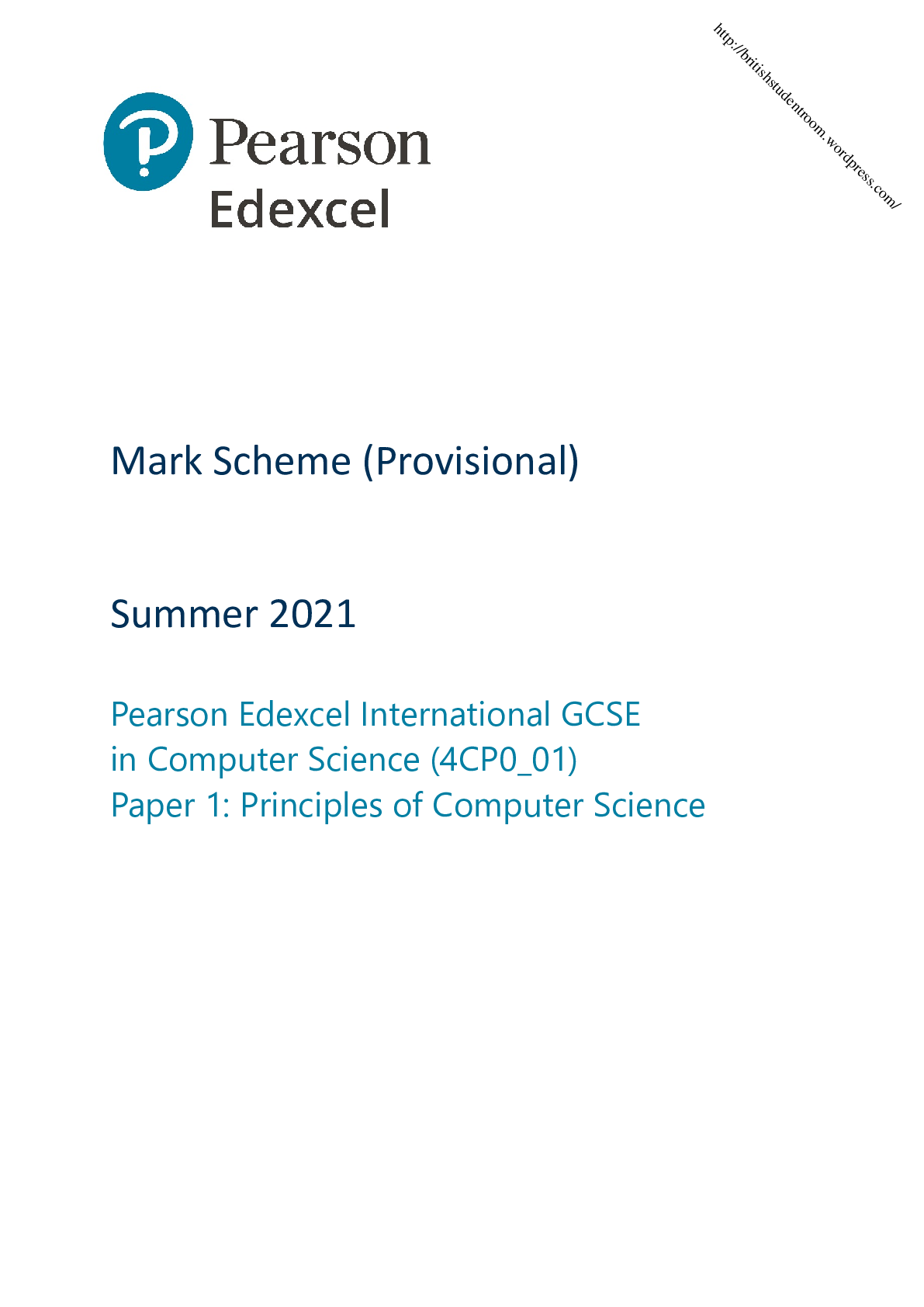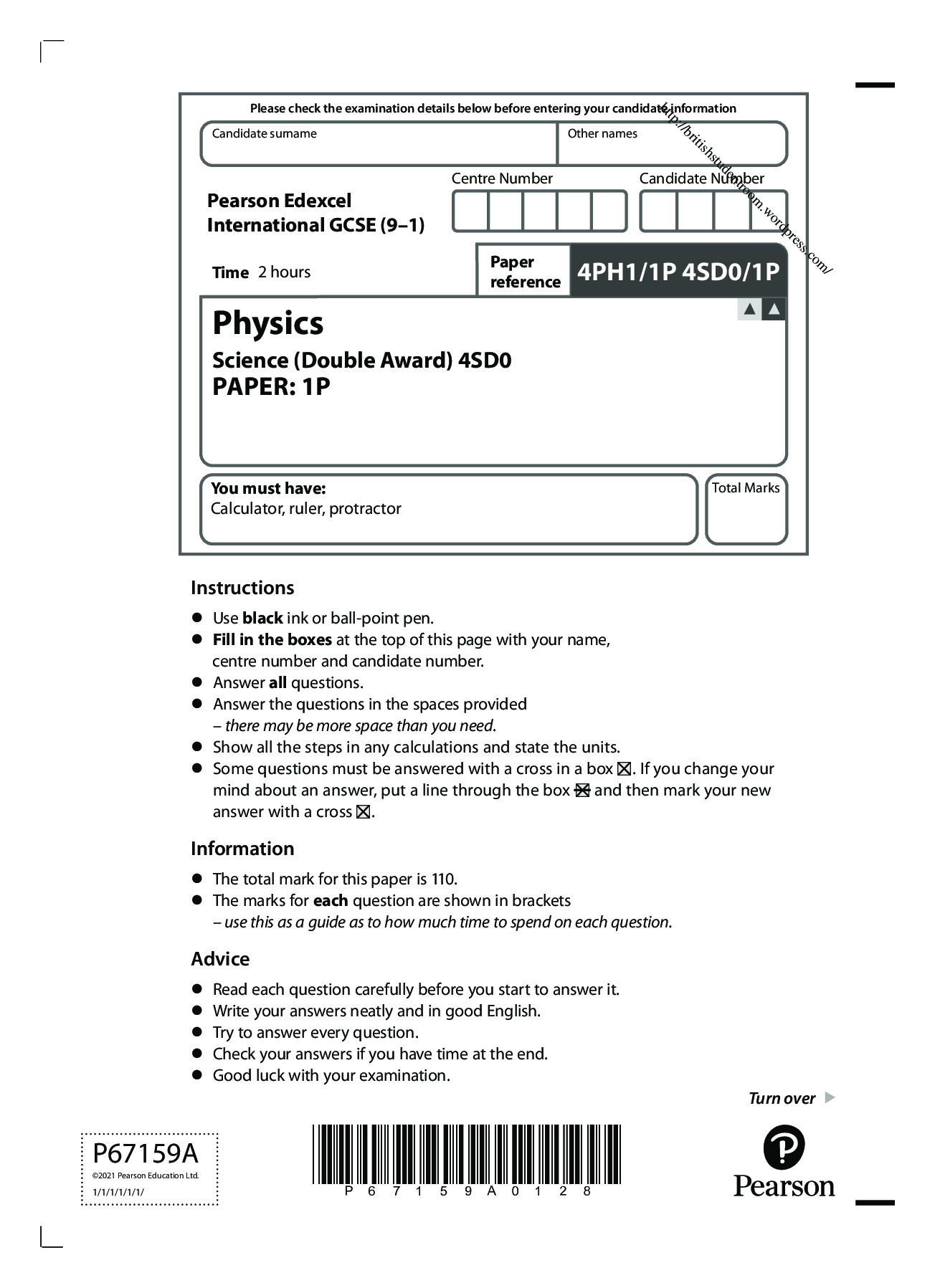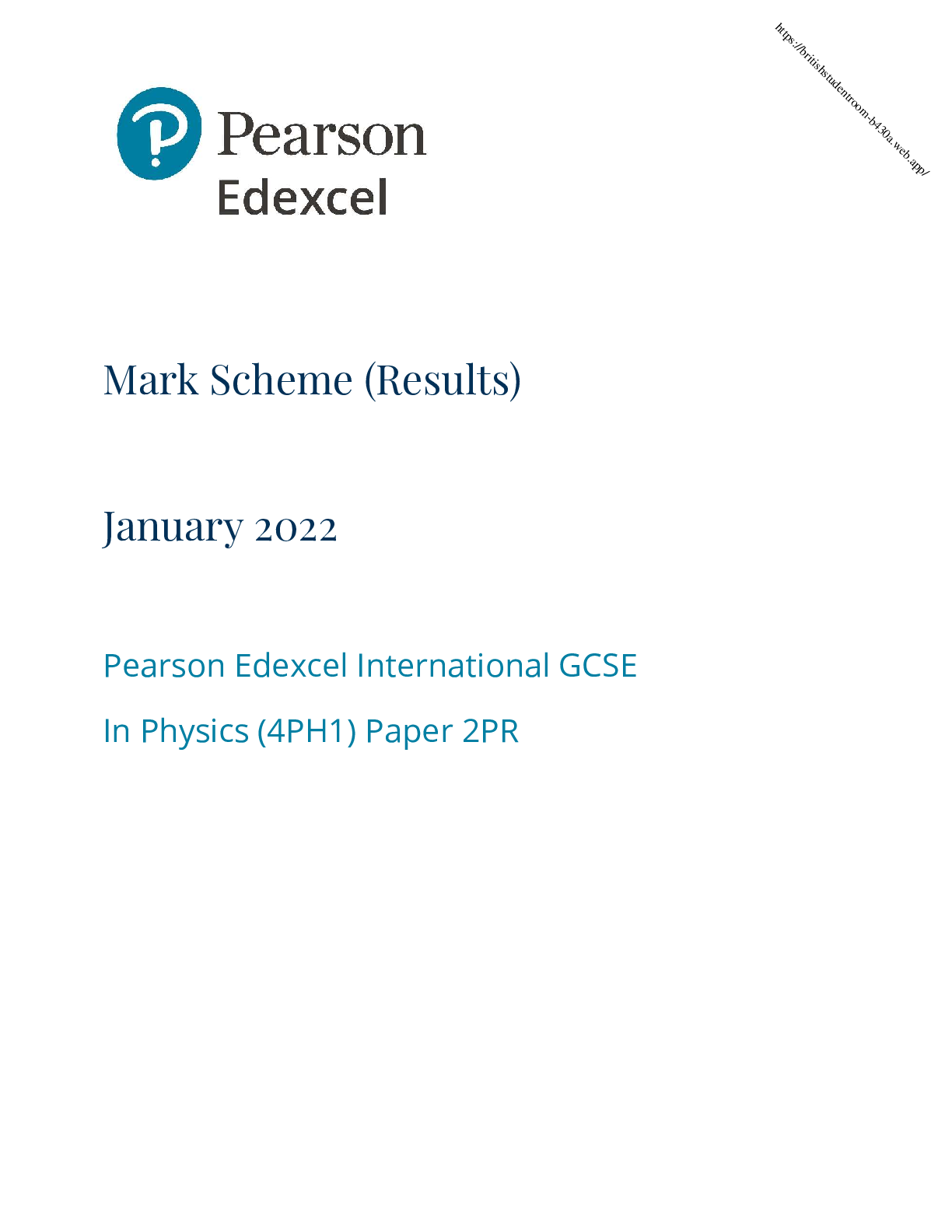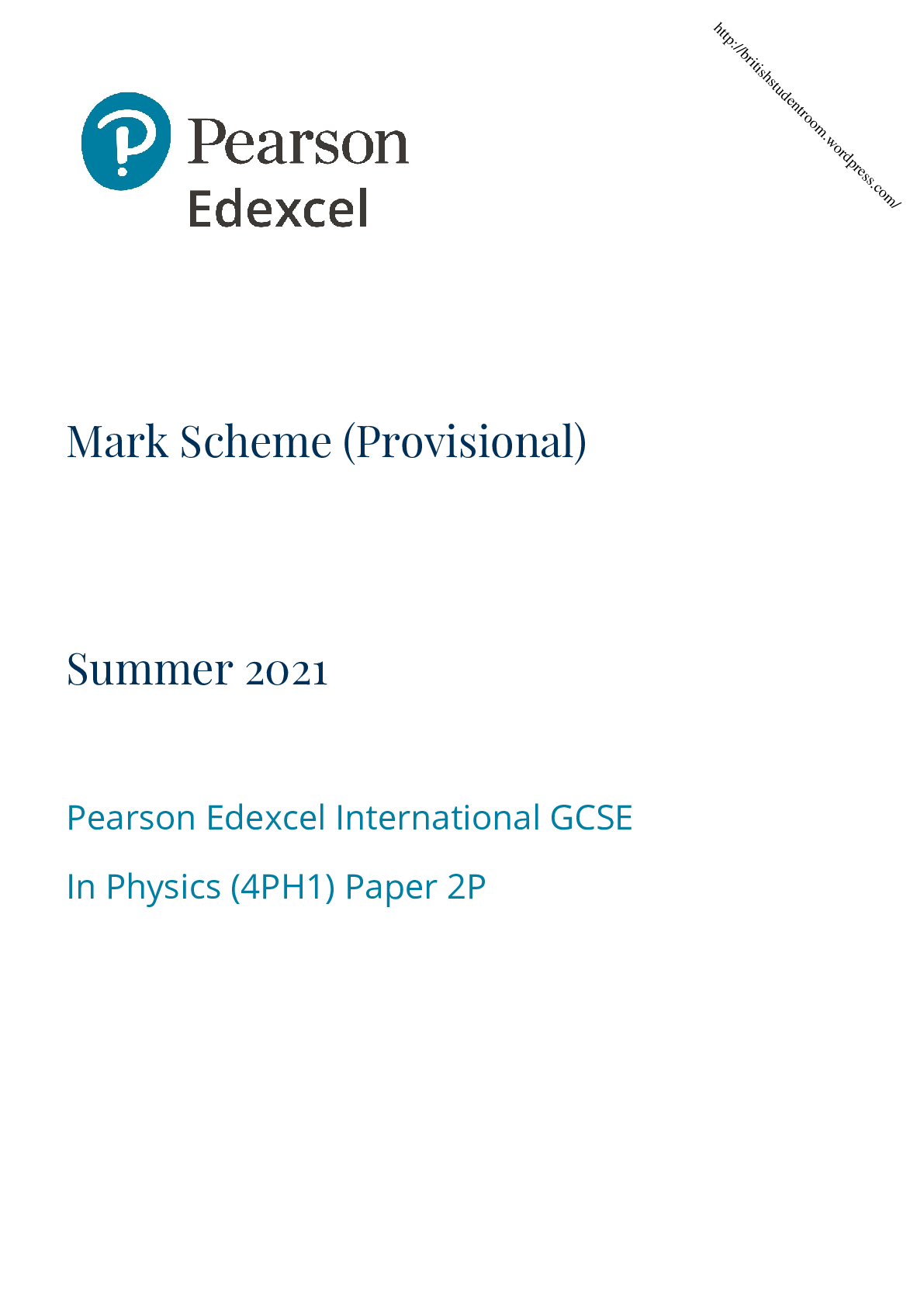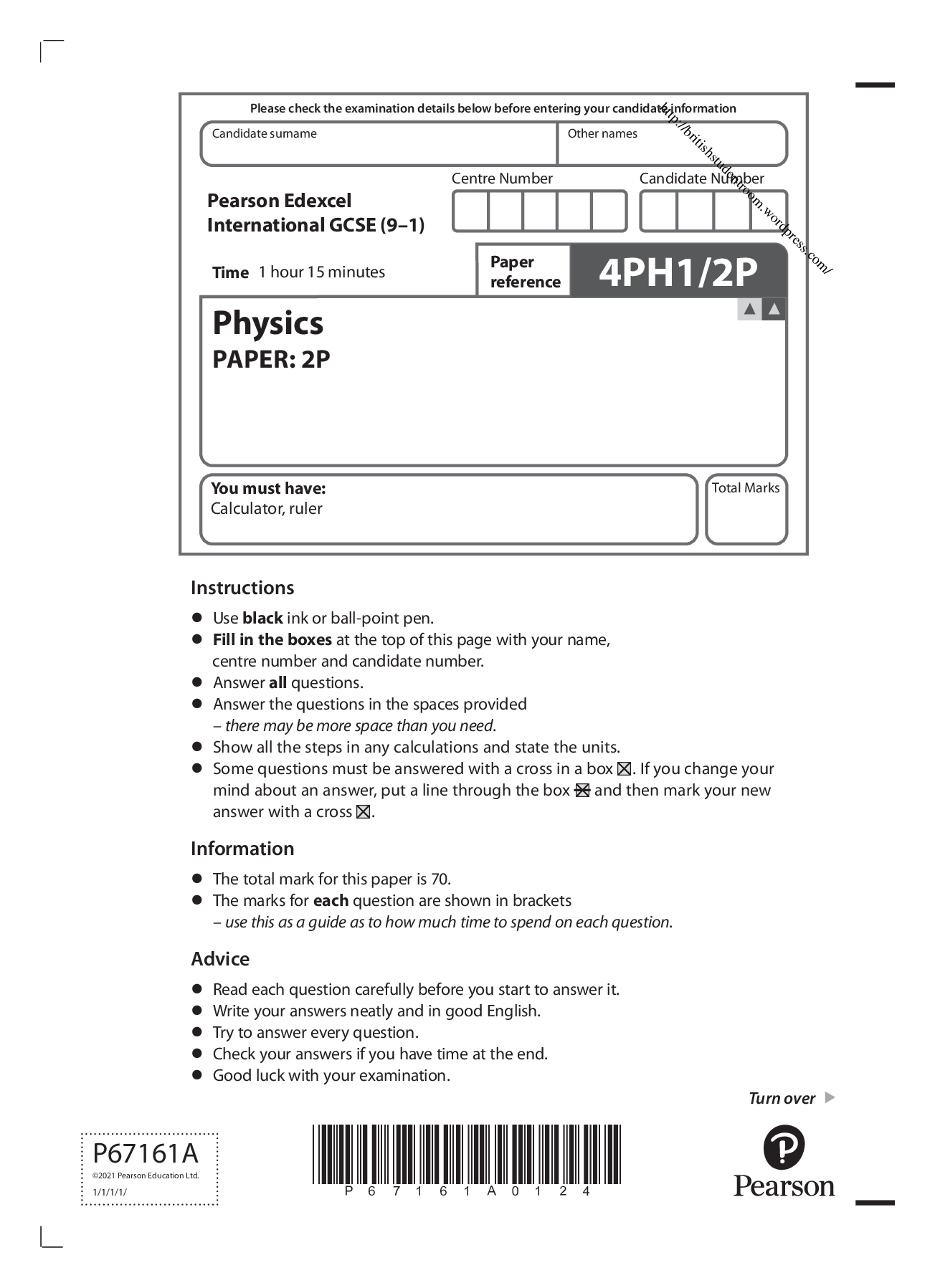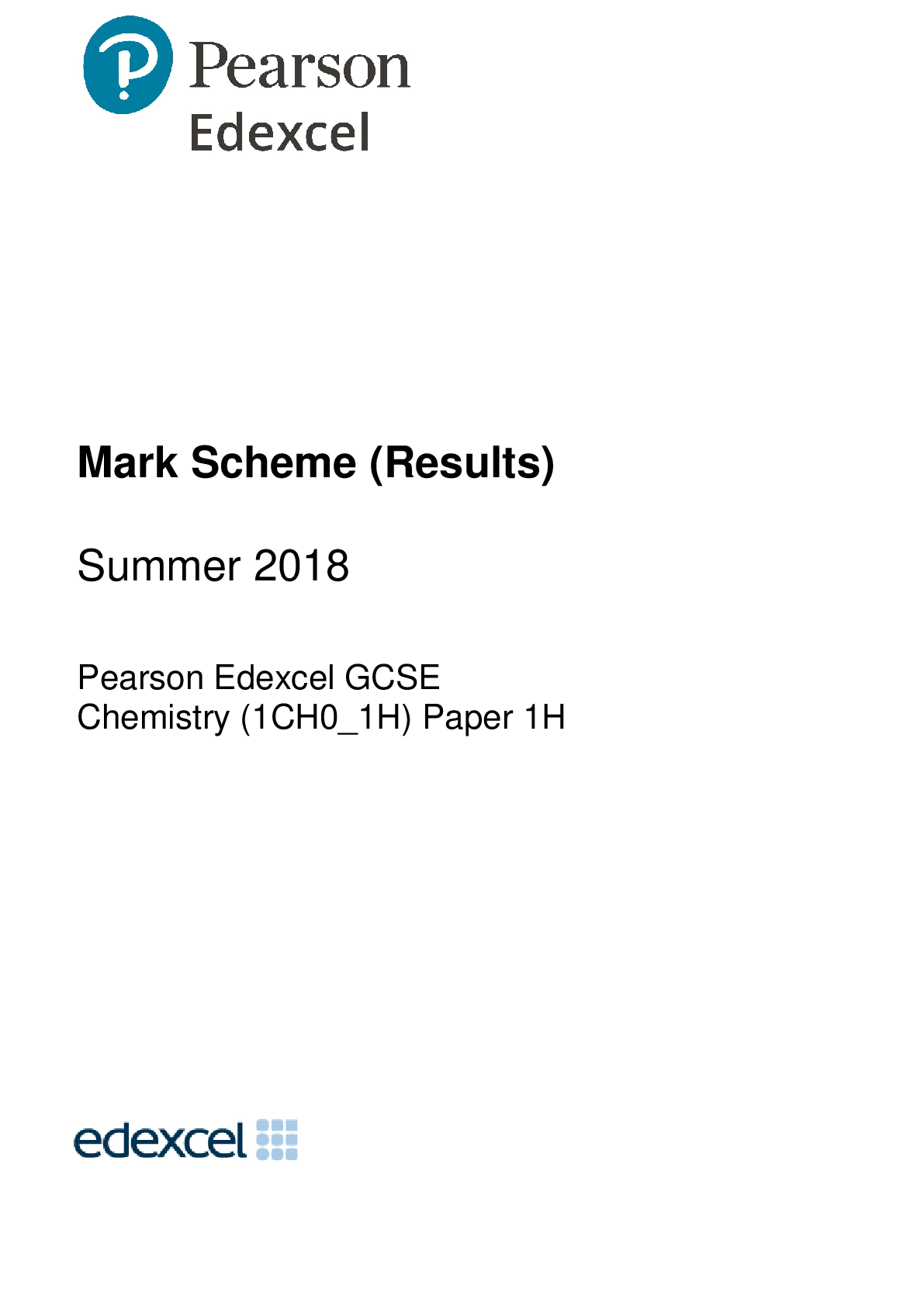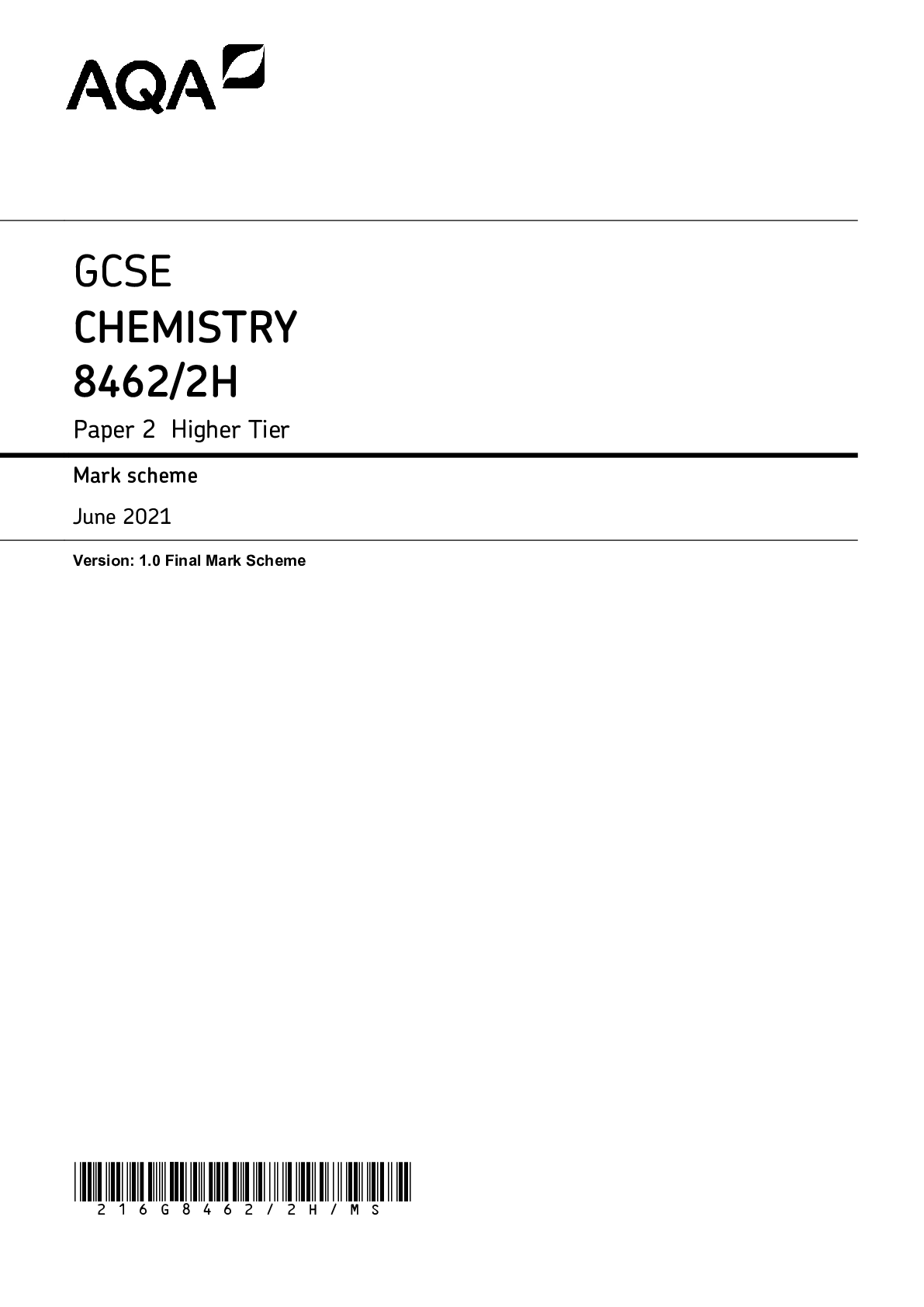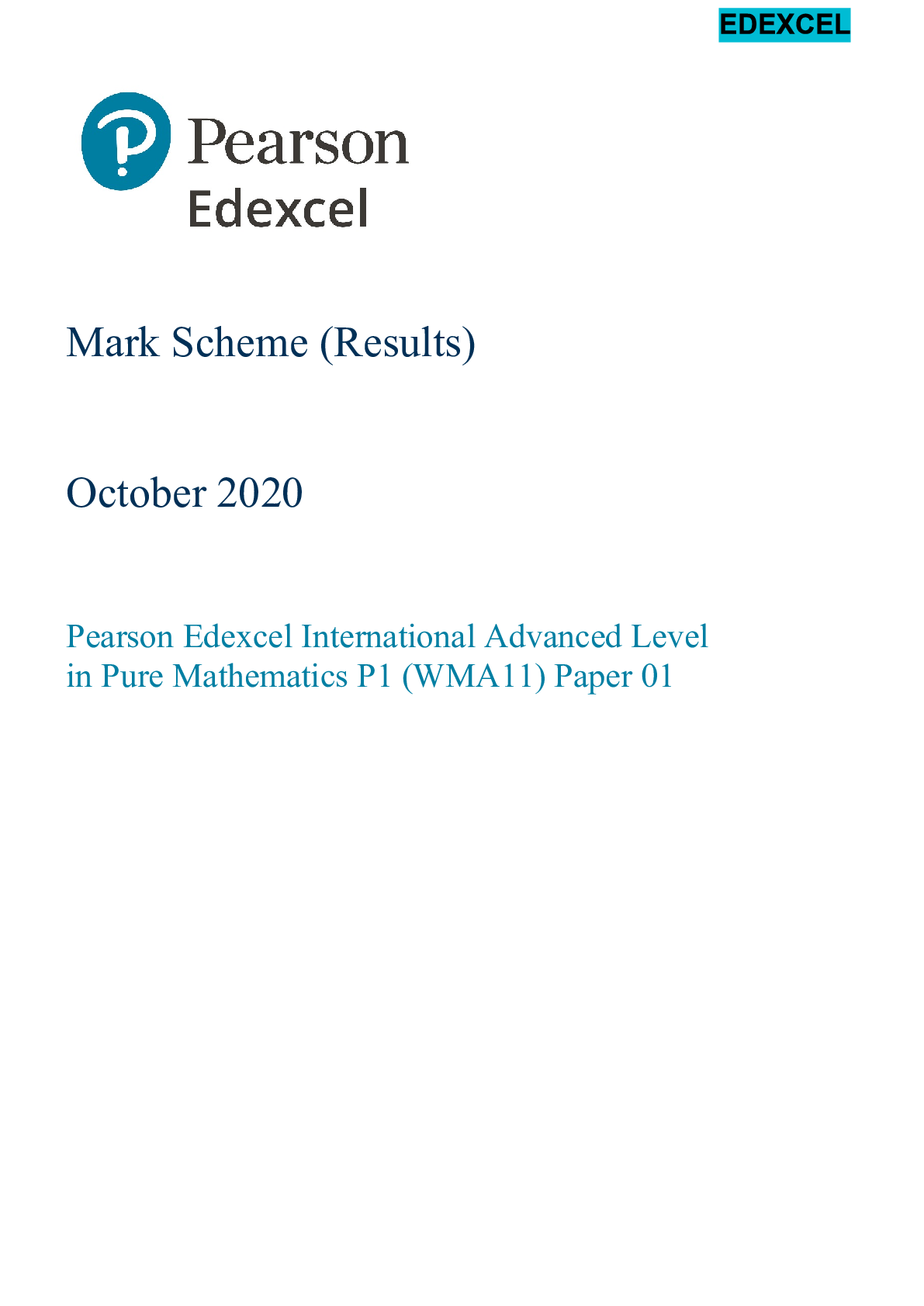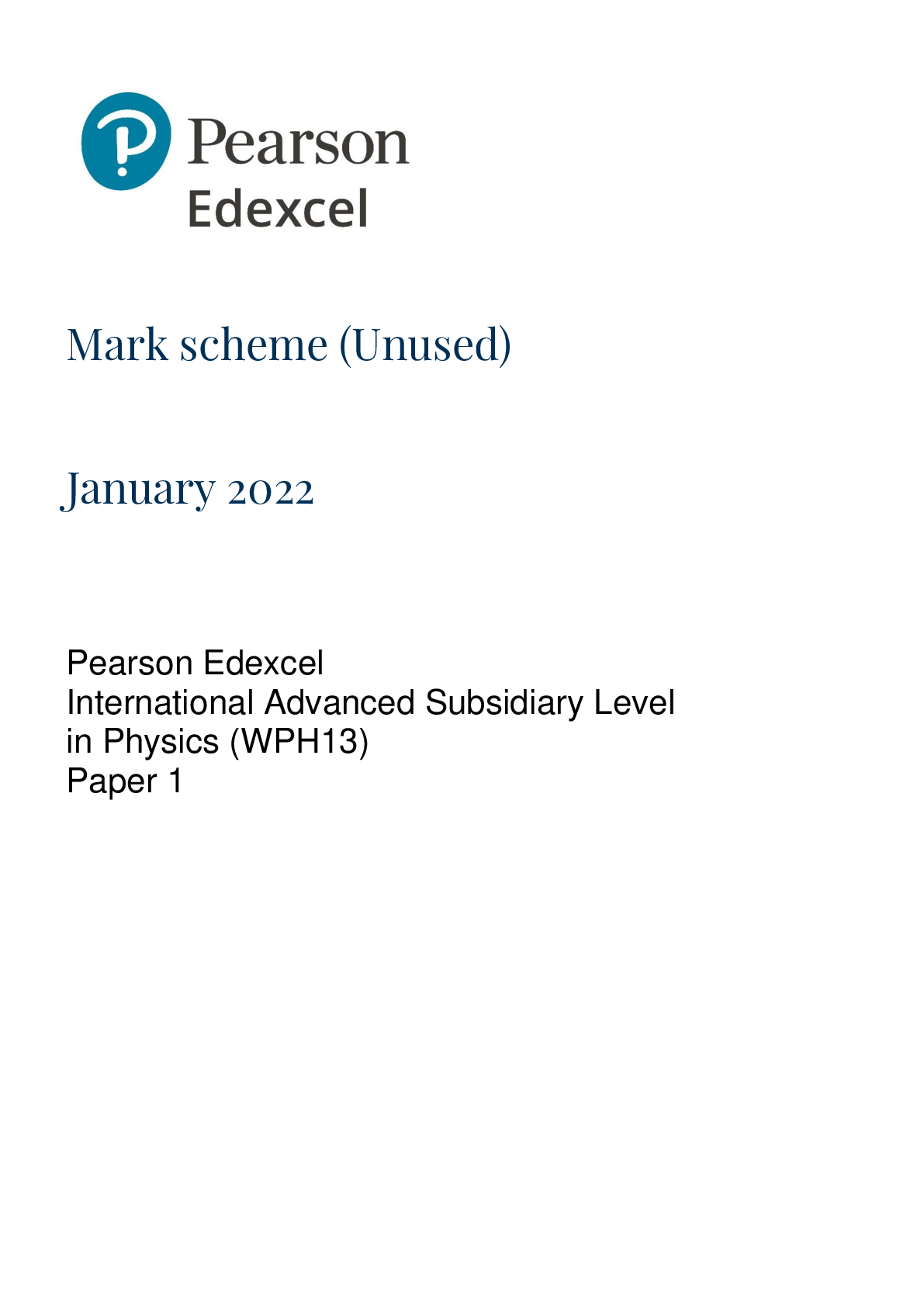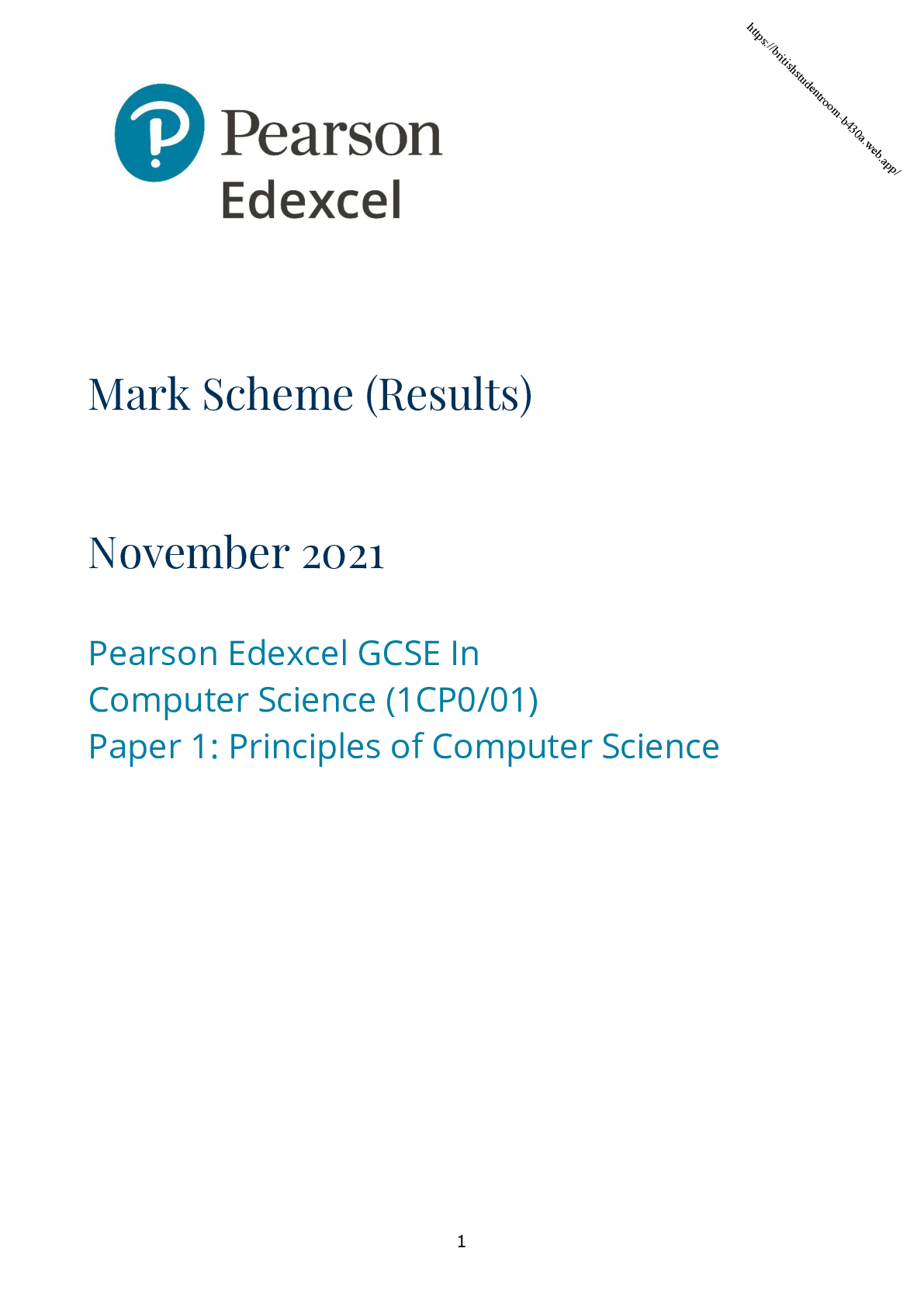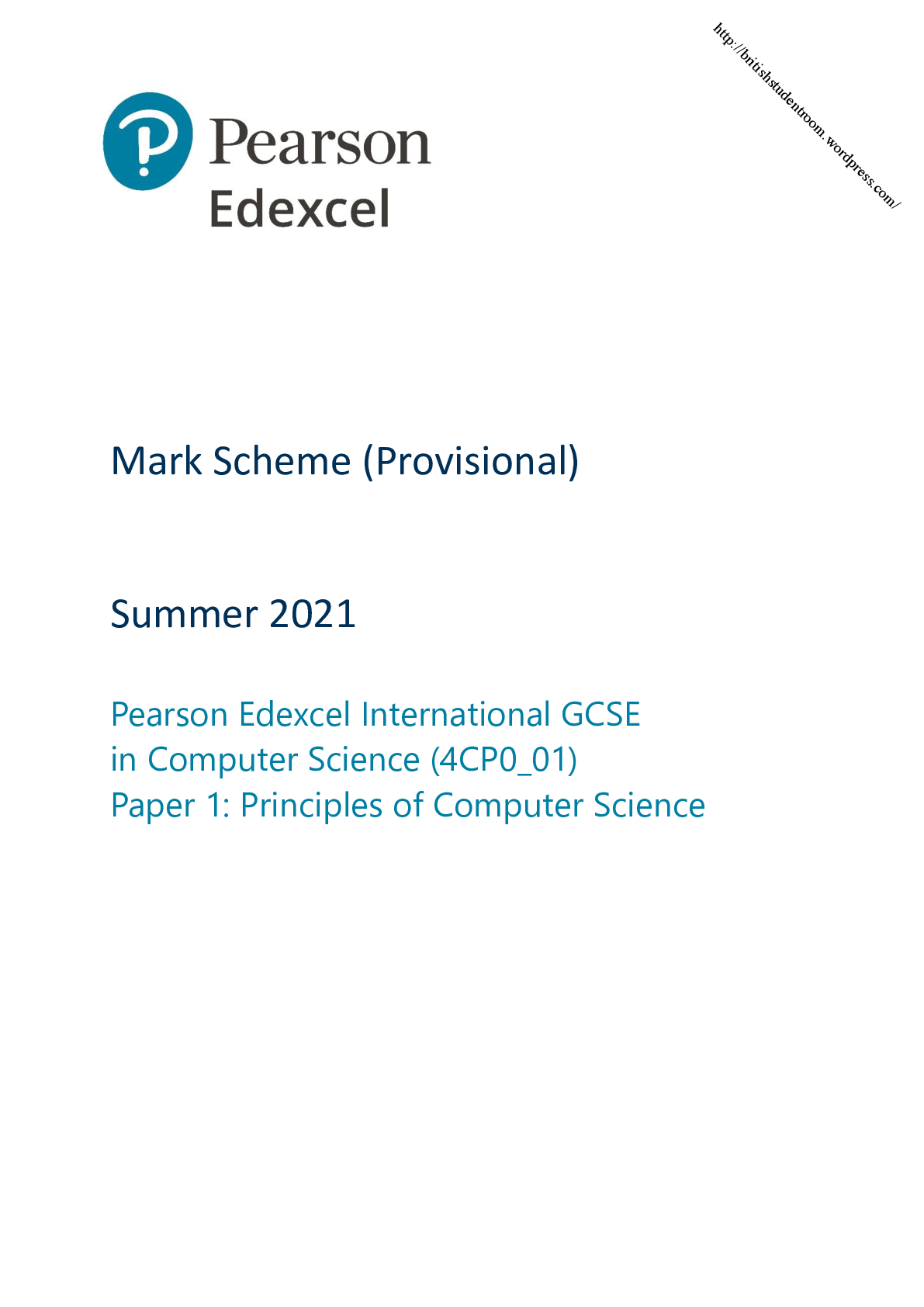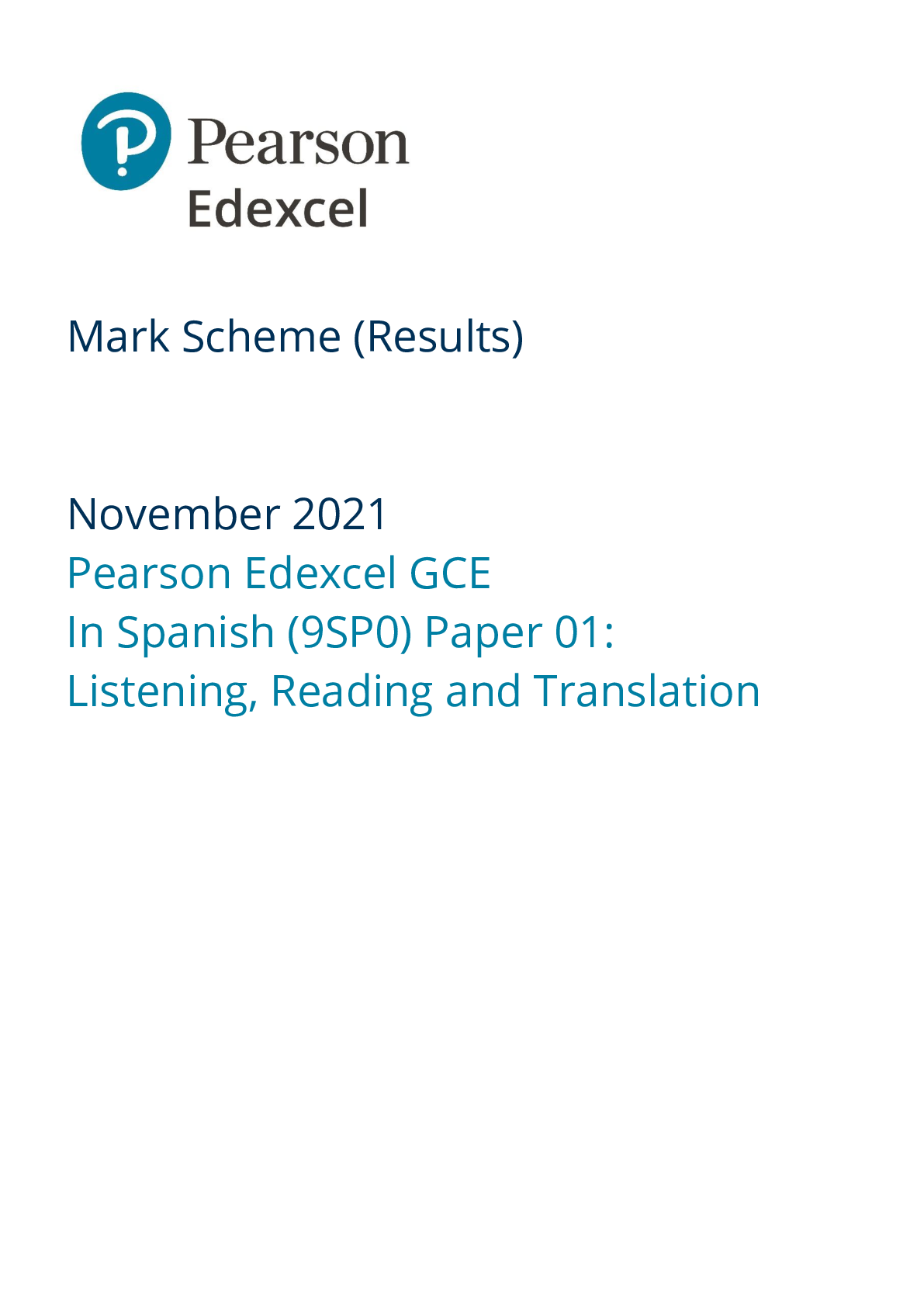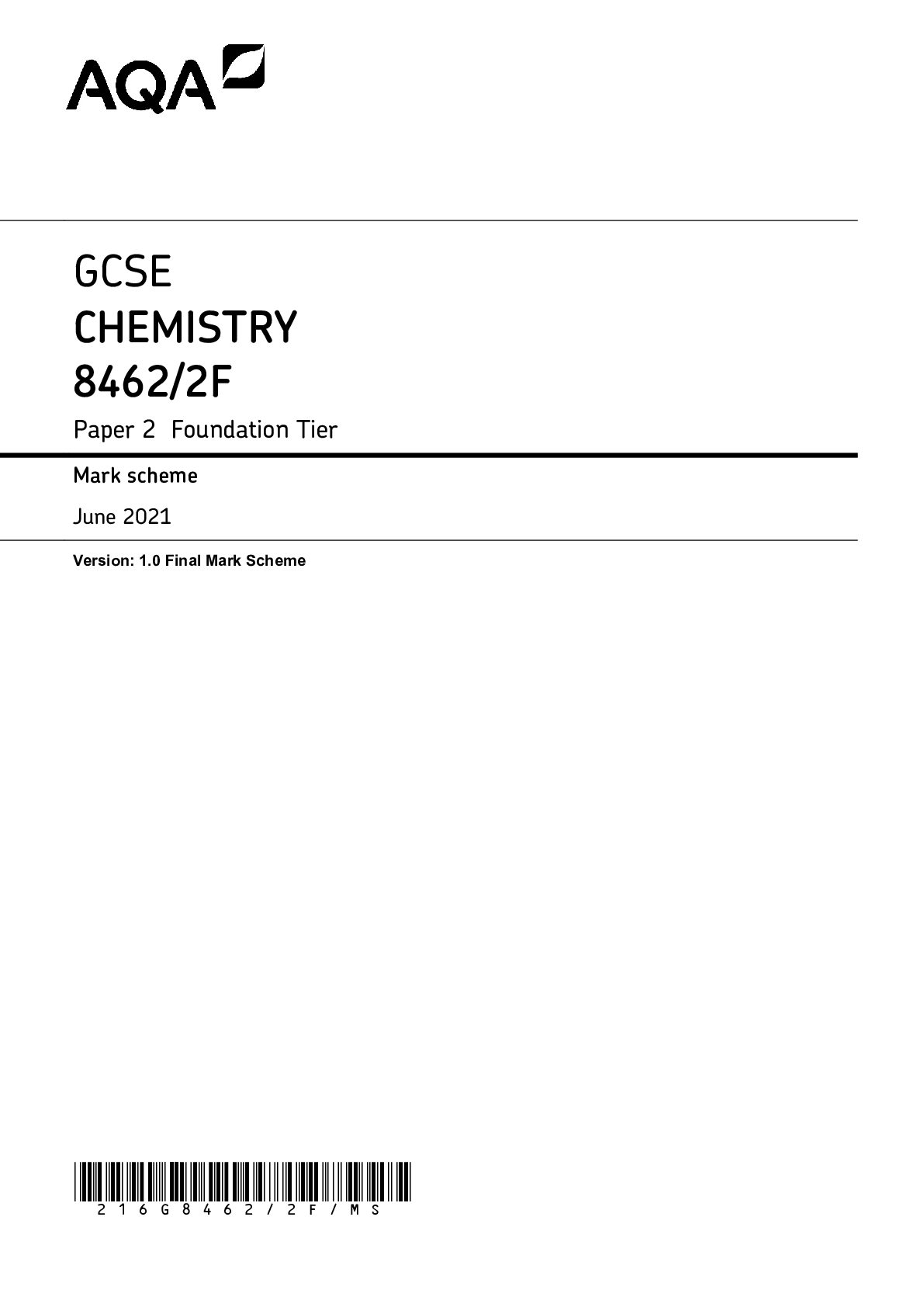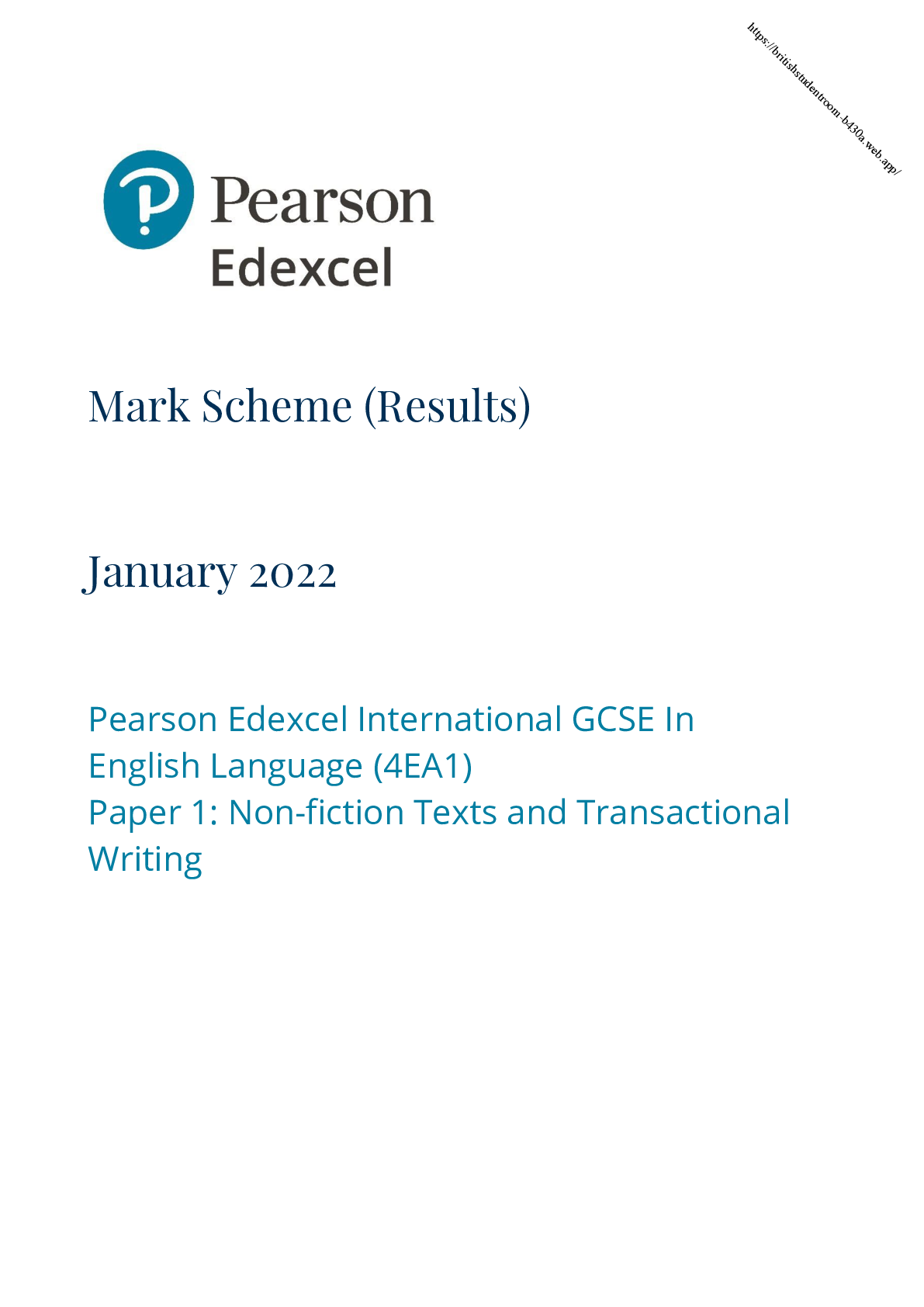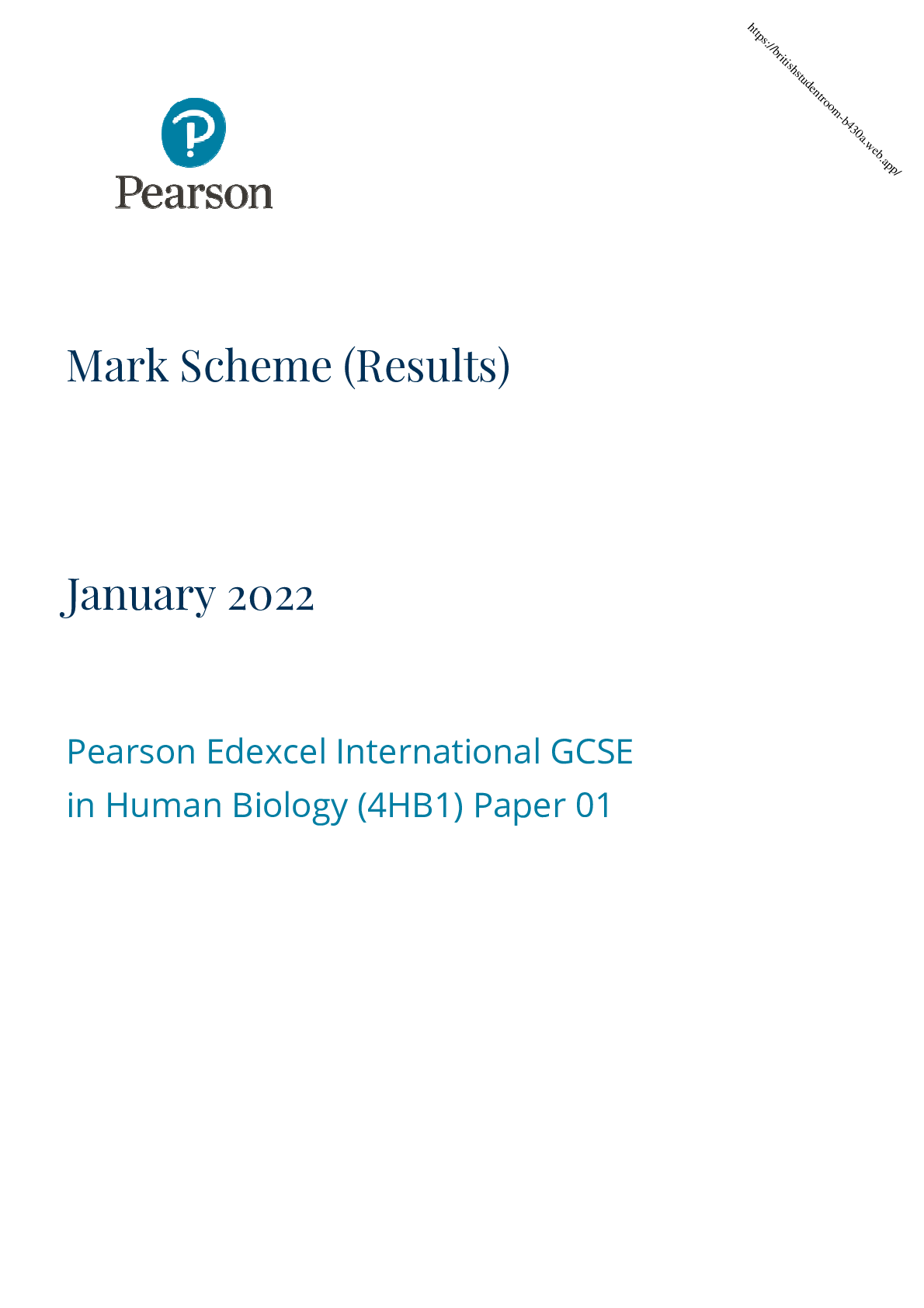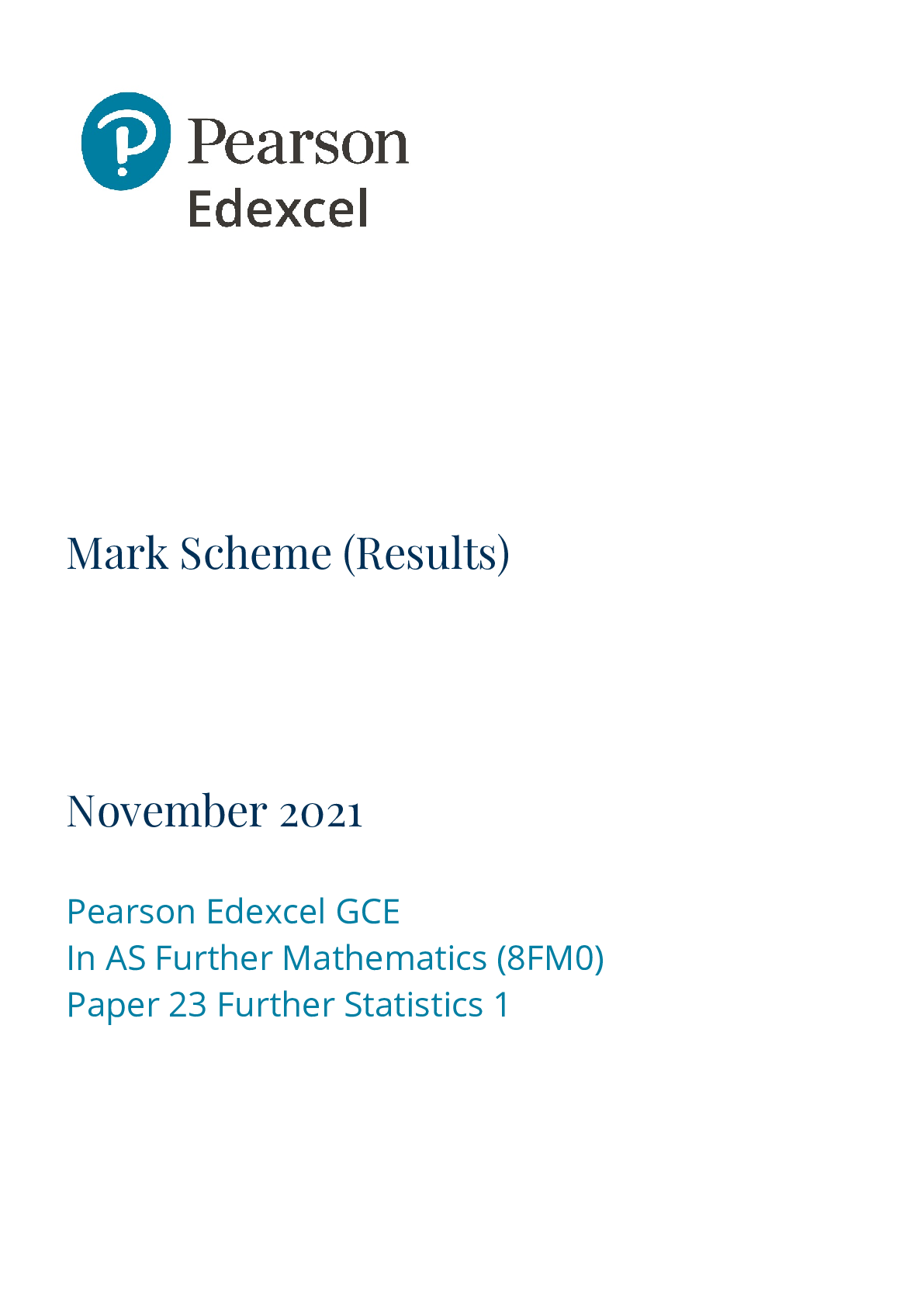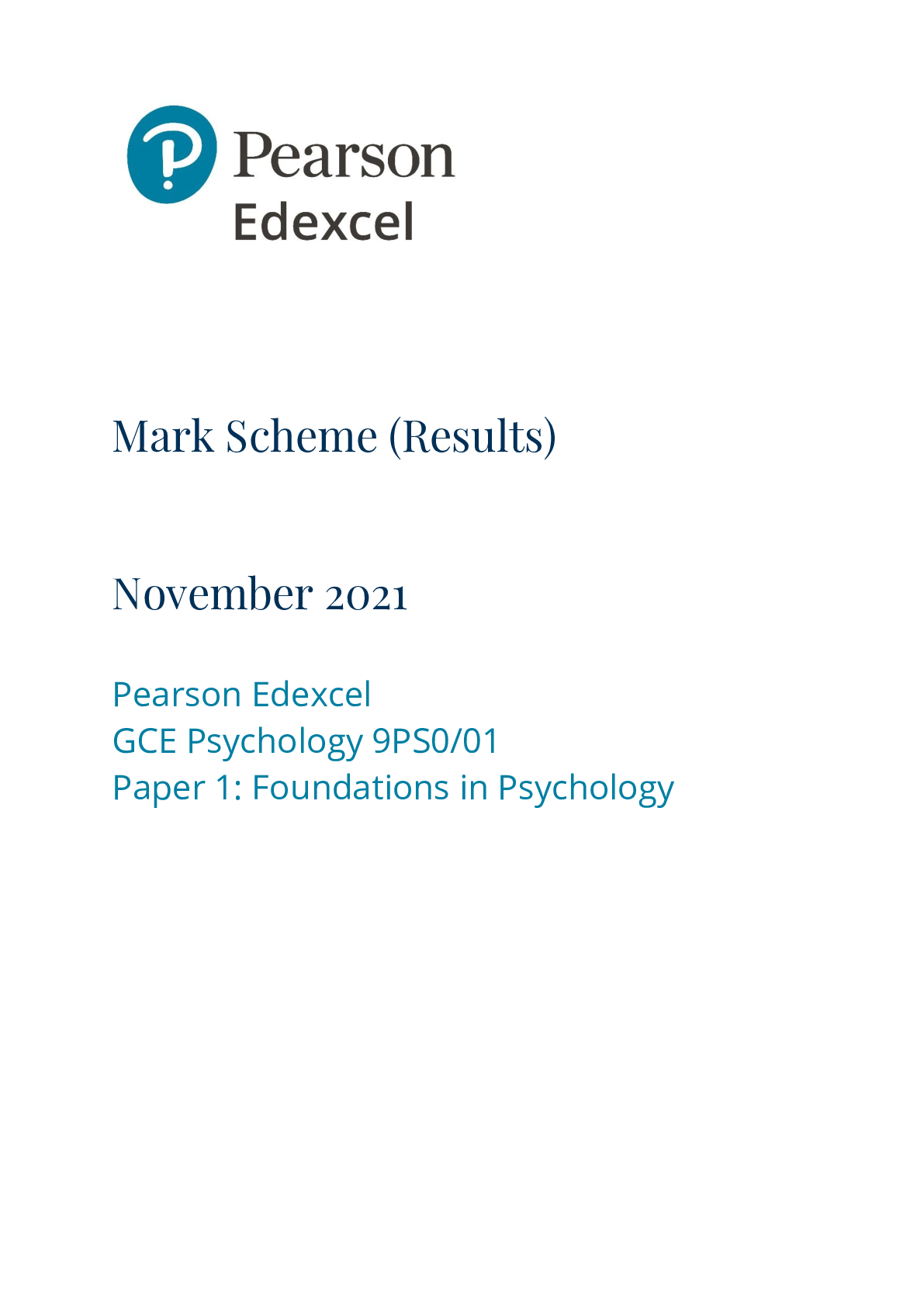Chemistry > Edexcel > INTERNATIONAL GCSE CHEMISTRY 9202/1 Paper 1 Mark scheme November 2021 Version: 1.0 Final Mark Scheme (All)
INTERNATIONAL GCSE CHEMISTRY 9202/1 Paper 1 Mark scheme November 2021 Version: 1.0 Final Mark Scheme
Document Content and Description Below
ARK SCHEME – INTERNATIONAL GCSE CHEMISTRY – 9202/1 – NOVEMBER 2021 4 Information to Examiners 1. General The mark scheme for each question shows: • the marks available for each part of th... e question • the total marks available for the question • the typical answer or answers which are expected • extra information to help the Examiner make his or her judgement • the Assessment Objectives, level of demand and specification content that each question is intended to cover. The extra information is aligned to the appropriate answer in the left-hand part of the mark scheme and should only be applied to that item in the mark scheme. At the beginning of a part of a question a reminder may be given, for example: where consequential marking needs to be considered in a calculation; or the answer may be on the diagram or at a different place on the script. In general the right-hand side of the mark scheme is there to provide those extra details which confuse the main part of the mark scheme yet may be helpful in ensuring that marking is straightforward and consistent. 2. Emboldening and underlining 2.1 In a list of acceptable answers where more than one mark is available ‘any two from’ is used, with the number of marks emboldened. Each of the following bullet points is a potential mark. 2.2 A bold and is used to indicate that both parts of the answer are required to award the mark. 2.3 Alternative answers acceptable for a mark are indicated by the use of or. Different terms in the mark scheme are shown by a / ; eg allow smooth / free movement. 2.4 Any wording that is underlined is essential for the marking point to be awarded. 3. Marking points 3.1 Marking of lists This applies to questions requiring a set number of responses, but for which students have provided extra responses. The general principle to be followed in such a situation is that ‘right + wrong = wrong’. Each error / contradiction negates each correct response. So, if the number of errors / contradictions equals or exceeds the number of marks available for the question, no marks can be awarded. However, responses considered to be neutral (indicated as * in example 1) are not penalised.MARK SCHEME – INTERNATIONAL GCSE CHEMISTRY – 9202/1 – NOVEMBER 2021 5 Example 1: What is the pH of an acidic solution? [1 mark] Student Response Marks awarded 1 green, 5 0 2 red*, 5 1 3 red*, 8 0 Example 2: Name two planets in the solar system. [2 marks] Student Response Marks awarded 1 Neptune, Mars, Moon 1 2 Neptune, Sun, Mars, Moon 0 3.2 Use of chemical symbols / formulae If a student writes a chemical symbol / formula instead of a required chemical name, full credit can be given if the symbol / formula is correct and if, in the context of the question, such action is appropriate. 3.3 Marking procedure for calculations Marks should be awarded for each stage of the calculation completed correctly, as students are instructed to show their working. Full marks can, however, be given for a correct numerical answer, without any working shown. 3.4 Interpretation of ‘it’ Answers using the word ‘it’ should be given credit only if it is clear that the ‘it’ refers to the correct subject. 3.5 Errors carried forward Any error in the answers to a structured question should be penalised once only. Papers should be constructed in such a way that the number of times errors can be carried forward is kept to a minimum. Allowances for errors carried forward are most likely to be restricted to calculation questions and should be shown by the abbreviation ecf in the marking scheme. 3.6 Phonetic spelling The phonetic spelling of correct scientific terminology should be credited unless there is a possible confusion with another technical term.MARK SCHEME – INTERNATIONAL GCSE CHEMISTRY – 9202/1 – NOVEMBER 2021 6 3.7 Brackets (…) are used to indicate information which is not essential for the mark to be awarded but is included to help the examiner identify the sense of the answer required. 3.8 Allow In the mark scheme additional information, ‘allow’ is used to indicate creditworthy alternative answers. 3.9 Ignore ‘Ignore’ is used when the information given is irrelevant to the question or not enough to gain the marking point. Any further correct amplification could gain the marking point. 3.10 Do not accept ‘Do not accept’ means that this is a wrong answer which, even if the correct answer is given as well, will still mean that the mark is not awarded.MARK SCHEME – INTERNATIONAL GCSE CHEMISTRY – 9202/1 – NOVEMBER 2021 7 Question 1 Question Answers Extra information Mark AO/ Spec. Ref. 01.1 sodium 1 AO2 3.1.2b Question Answers Extra information Mark AO/ Spec. Ref. 01.2 Al 1 AO2 3.1.3a Question Answers Extra information Mark AO/ Spec. Ref. 01.3 Ar 1 AO2 3.1.3c Question Answers Extra information Mark AO/ Spec. Ref. 01.4 Fe 1 AO2 3.7.2a 3.8.3.c Question Answers Extra information Mark AO/ Spec. Ref. 01.5 any one from: • elements are in the same group • same number of electrons in their highest energy level • same number of outer electrons allow same number of electrons in outer shell [Show More]
Last updated: 1 year ago
Preview 1 out of 23 pages
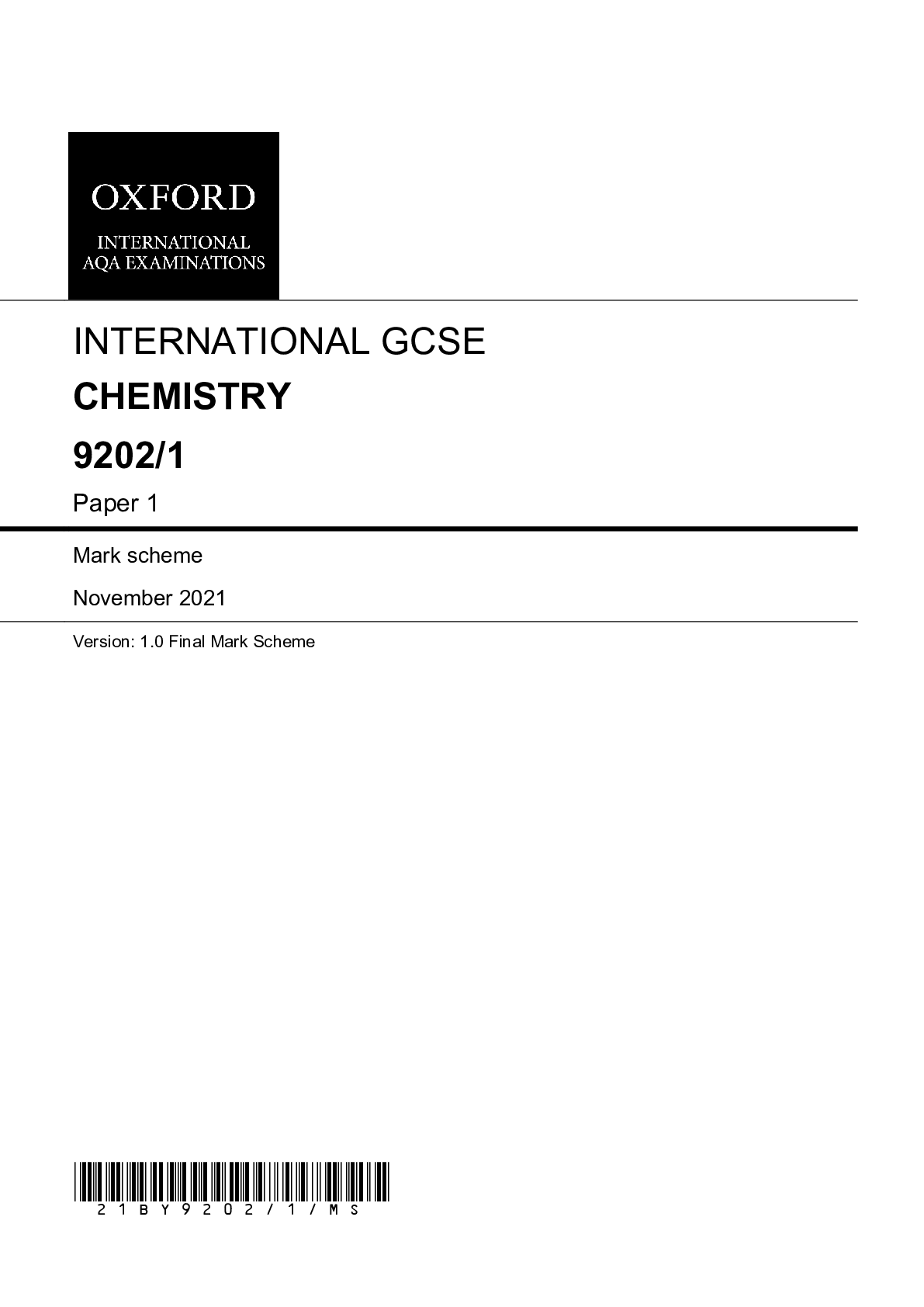
Reviews( 0 )
Document information
Connected school, study & course
About the document
Uploaded On
Jun 16, 2022
Number of pages
23
Written in
Additional information
This document has been written for:
Uploaded
Jun 16, 2022
Downloads
0
Views
80



